July 5th, 2012
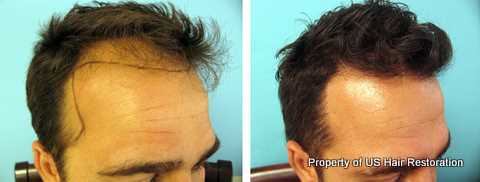
Follicular Unit Transplants (FUT) has come of age. This advanced type of modern hair restoration provides patients with a natural, proven and permanent hair loss solution. Many people do not understand that FUT hair restoration is available in two distinct forms of hair transplant surgeries. They are
- the ‘Strip Method’ and
- ‘Follicular Unit Extraction’ method
Both these procedures consist of transplanting hair from the permanent zone. This is the area of the scalp where hair loss does not occur. The harvesting method in each procedure is different. This blog is particularly devoted to the ‘Strip Method.”
Strip Method Hair Transplants
In this form of FUT hair restoration surgery a donor strip is taken from the back of the patients scalp. The size of the donor strip is determined in the patient’s pre-op consult and microscopic evaluation. The donor strip is removed by your hair transplant surgeon and separated into naturally occurring follicular grafts of 1, 2, 3 and 4 hairs. These grafts are meticulously and artistically placed in recipient incisions made by your doctor in the balding areas. Below are some of the advantages that patients who elect the FUT strip method enjoy.
Advantages of FUT Strip Hair Transplant
- Maximization of the number of grafts that can be harvested in a single hair transplant session. This advance technique allows for the transplanting of over 3500 grafts. Many patients who have never had a hair transplant can complete their hair restoration in a single surgery.
- Damaged to hair grafts is minimized. The strip procedure allows the surgical team to harvest and process the grafts under microscope effectively reducing transection (damaging hair follicles).
- The surgery is less labor intensive then its FUE counterpart and can be elected at a more affordable cost.
Tags: Dr. Mohebi, fue, hair transplant, hair transplant surgery, us hair restoration
Posted in Dr. Parsa Mohebi, hair transplant, men hair restoration | 2 Comments »
June 21st, 2012
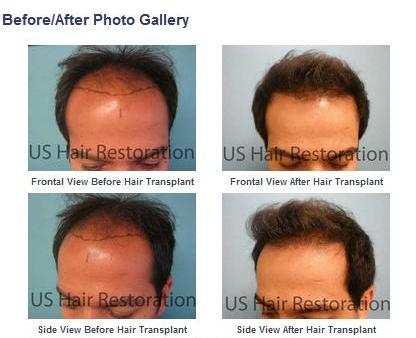
Modern technology has allowed our society with proven, natural permanent hair loss options.
Modern technology has allowed our society with options not possible a half century ago. Medical and scientific advancement presents promising changes with each advancing generation. An example is the loss of vision typical with age like hair loss. People with vision problems, had the disadvantage of wearing glasses; although there are contact lenses as well. There is still a dependence upon outside tools to reduce the loss of vision; which inconvenient and sometimes greatly reducing the quality of life. Now the near miraculous advancements in LASIK vision correction has made vision correction possible. No longer are middle agers at tables in restaurants pulling out their glasses or squinting helplessly to read the menu; the stubborn problem of fading eyesight for millions of people is solved.
If someone chooses to undergo a LASIK procedure, does it make him an insecure person? Not in the least! Rather, they are using their resources to correct a medical problem and look their best.
Hair Restoration Is Nothing to Be Embarrassed About
Our Los Angeles based US Hair Restoration clinics consistently receive calls and emails from people who need hair restoration for their baldness, but they are shy to provide their names as they inquire to be able to get more information about hair restoration options.; It is amazing how many want to hide the fact they contacted us for advice. We are proud of our fine medical staff and patient advocates who are exceptionally sensitive to the needs of those seeking our help. It is one of the deeply rewarding aspects of our profession that we can provide encouragement to our patients, as well as, give them new hope, confidence, and a fresh perception of how their suffering from hair loss can be alleviated.
Hair loss is a disease, a common one and like many other diseases there are treatments for it.
So, we are proud to say: “Today, most people no longer have to endure being bald”
Modern Medical and Technological Advancements for Hair Loss
Modern medical and technological advancements provide similar relief for hair loss sufferers as Lasik for people with vision loss. One day we hope the stigma of addressing hair loss through medical treatment lessens its impact on people who suffer from baldness as it has for those with vision impairment.
At our Southern California centers our team uses the latest technologies and procedures to perform FUT and FUE hair restoration surgeries. These procedures provide our patients with a permanent natural treatment for their hair loss. The progress in hair transplant surgery now provides our patients with results that are proven, natural and permanent.
Tags: advanced hair transplant technology, Dr. Mohebi, hair loss, modern hair restoration, restoring hair, self esteem
Posted in Dr. Parsa Mohebi, Los Angeles Hair Transplant, US Hair Restoration | No Comments »
June 4th, 2012
Hair Transplant Gigosessions: A Patient Benefit
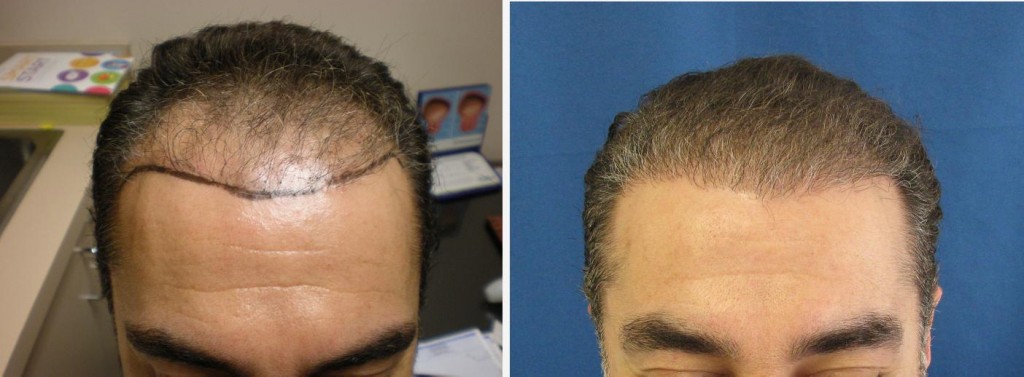
Gigosessions and all hair transplant surgeries are optimally aided by the use of the Laxometer, invented by Parsa Mohebi, MD medical director at US Hair Restoration centers. Laxometer is an intra-operative tool that is becoming an industry standard globally. Utilizing the metric system for most accurately determining scalp laxity, Laxometer helps the surgeon to reduce the risk of closure tension on donor wound edges. The result leads to minimize the tension of the donor wound edges and increases the safety of the strip follicular unit hair transplantation. The Laxometer’s preciseness in measurements allows hair restoration surgeons to best formulate the safe size of donor strips. Donor strip size ultimately determines the number of possible grafts available for hair transplantation.
These exciting developments for hair loss sufferers have made hair restoration a natural, permanent and proven solution.
Tags: advance hair transplant, hair loss, laxometer, scalp laxity
Posted in Bakersfield hair transplant, hair transplant, Los Angeles Hair Transplant, Parsa Mohebi MD, US Hair Restoration | 1 Comment »
May 17th, 2012
One of the goals of US Hair Restoration is to connect our patients with Medical Director, Dr. Parsa Mohebi. One of the difficulties of the high paced environment of cosmetic surgery is there is little time for non-patients to connect with the doctor himself. Every few months we connect Dr. Mohebi with patients and those with question through an ongoing webinar series. We are proud to announce the webinars are available to be watched by topic at our website. Here are a couple of popular topics discussed by Dr. Mohebi:
Hair Loss Psychology
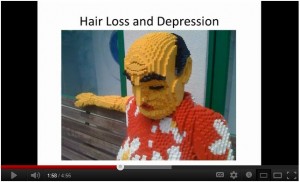
Male Patterned Hair Loss
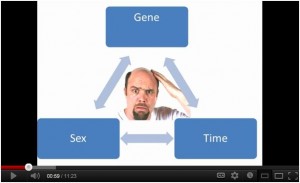
Tags: Webinar
Posted in US Hair Restoration, Video, Webinar | No Comments »
May 5th, 2012
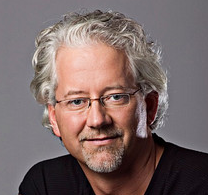 Many come to us at US Hair Restoration with questions about the phenomenon of graying hair. It is obvious to most that graying hair grows thicker and better than the hairs with the natural hair color. Studies have shown there is a correlation between different the elements of hair growth as to why hair turns gray or eventually white. Many come to us at US Hair Restoration with questions about the phenomenon of graying hair. It is obvious to most that graying hair grows thicker and better than the hairs with the natural hair color. Studies have shown there is a correlation between different the elements of hair growth as to why hair turns gray or eventually white.
When the proteins and genes in hairs are evaluated, it is seen why naturaly colored and white hairs grow differently. When the morph patterns in scalp hair and eyebrow hair on humans are observed, keratin and keratin-associated protein genes in gray hair were up-regulated at least 2-fold in comparison with black or pigmented hair in their analysis.
All this being said, the white or non-pigmented hairs, were twice as thick as the normal pigmented hairs. These observations suggest that graying hair and active hair growth are associated with one another. A breakthrough revelation that helps to shed light on why certain hair growth patterns seem odd, yet serve a purpose.
Tags: Gray Hair, Hair Color
Posted in General Information | No Comments »
April 18th, 2012
It is common for patients to wonder about the state of their receded hairline and the ability to restore it to its original place. Modern, high-quality hair restoration allows us to restore patient’s hairlines, but while always keeping the final results in mind.
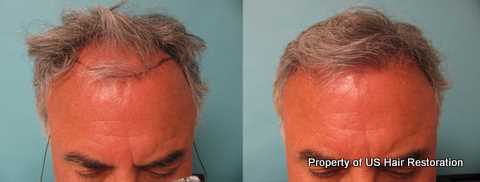
When re-designing a hairline which has receded, the expectations of the patient are weighed with the reality of how the overall transplantation procedure will look with the new hairline. Not every patient has the same expectations and donor density. Some expectations are frankly unrealistic. Every individual hair restoration needs are unique to that person, and is up to the hair transplant surgeon to determine the number of grafts needed for a fuller look.
It is our desire to see all hair transplantation patients be happy with their results and we recommend always finding a quality hair loss doctor who can meet those needs. At US Hair Restoration we have several offices throughout California in Los Angeles, Beverly Hills, Orange County, San Diego, Bakersfield, and San Francisco and also provide a virtual consultation option.
Tags: receding hair lines
Posted in after hair transplant, hair transplant, hair transplant repair | No Comments »
April 3rd, 2012
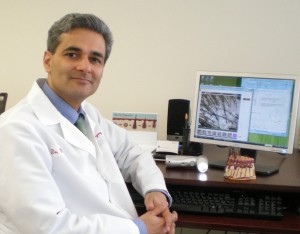 Last season saw the launch of a series of webinars meant to educate those interested in the science and art of hair restoration, as well as personally connect with Dr. Mohebi. Since the demands of everyday life make personal connections limited, Dr. Mohebi felt a webinar would be a great place to connect and answer any questions that patients may have which are difficult to find accurate answers to. Last season saw the launch of a series of webinars meant to educate those interested in the science and art of hair restoration, as well as personally connect with Dr. Mohebi. Since the demands of everyday life make personal connections limited, Dr. Mohebi felt a webinar would be a great place to connect and answer any questions that patients may have which are difficult to find accurate answers to.
The previous webinar tackled three common subjects which we are constantly being asked about. “Hair Loss Psychology” was the first to be discussed and Dr. Mohebi explained the strain many feel as a result of their appearance not being as youthful as it once was. This reality is hard to accept for many and Dr. Mohebi explained the different options available.
The second topic discussed was “Hair Transplant: How Does It Work”. This segment explained the different facets of a hair transplant procedure and what is to be expected before, during, and after the surgery.
The final topic was entitled “The Latest Technology In Hair Transplantation” where updated information in the world of hair restoration was discussed. New products such as the laxometer, and current surgical methods were discussed.
The upcoming webinar is on Tuesday April 10th at 6PM, Dr. Mohebi will discuss 3 popular hair restoration topics. There will be a time for Q & A as well as incentives given for joining. If you would like to be a part of US Hair Restorations next webinar send an email to webinar@ushairrestoration.com.
Tags: April 2012, Webinar
Posted in Parsa Mohebi MD, US Hair Restoration, Webinar | No Comments »
March 16th, 2012
 Diabetes is a common disease that has fallen upon many Americans. Often times people suffering from Diabetes will come to US Hair Restoration wondering whether they qualify for a hair transplant procedure. The question we often ask our patients is how well their diabetes is maintained. Diabetes is a common disease that has fallen upon many Americans. Often times people suffering from Diabetes will come to US Hair Restoration wondering whether they qualify for a hair transplant procedure. The question we often ask our patients is how well their diabetes is maintained.
Patients who have diabetes are able to have successful hair restoration procedures as long as the condition is under control. For many years Diabetes was a disorder that lowered a person’s life expectancy, and because of the risk of wound complications and infections, elective surgeries were limited. With modern medical science and updated methods for controlling diabetes, patients can safely have their transplantation procedures and other elective procedures without a major risk of infection or complication’s during the healing phase.
The protocol Dr. Mohebi has established here at US Hair Restoration requires there to be a clearance from the patient’s regular physician who monitors their diabetes more closely. When the blood glucose range is at a normal level and there is managable control over the diabetes, then a hair restoration is a viable option.
Tags: Diabetes
Posted in hair loss complications, Hair Loss Conditions | No Comments »
March 6th, 2012
There have been times when patients ask about sex and hair loss. Some have even bragged about rapidly losing their hair because they have had very active sex lives. Most patients will always try and find a convenient reason for their progressive balding during the earliest stages.
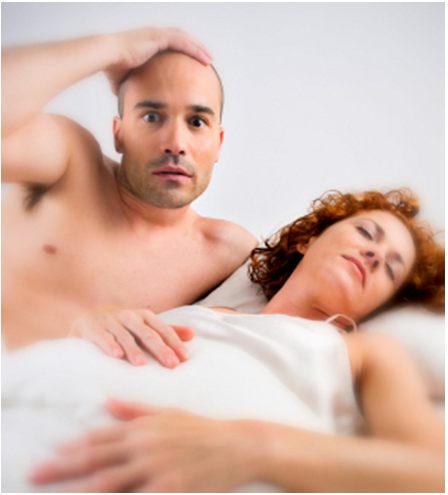 Those with active sex lives are not the only ones suffering from hair miniaturization who try and find a reasonable excuse for their predicament. Often times the person’s partner is blamed, stressful situations, bad relations, or significant changes in their lives. When viewing the issue realistically, time, genetics, and gender, are the only true contributing factors to permanent hair loss. Other environmental factors merely accelerate the speed of the genetically predisposed hair loss. Individuals who are not genetically prone to balding may lose hair because of stress or trauma, but only for a time once the stressor is gone. For people prone to hair loss, once it’s gone it is gone. That is when other options such as hair restoration is needed. Those with active sex lives are not the only ones suffering from hair miniaturization who try and find a reasonable excuse for their predicament. Often times the person’s partner is blamed, stressful situations, bad relations, or significant changes in their lives. When viewing the issue realistically, time, genetics, and gender, are the only true contributing factors to permanent hair loss. Other environmental factors merely accelerate the speed of the genetically predisposed hair loss. Individuals who are not genetically prone to balding may lose hair because of stress or trauma, but only for a time once the stressor is gone. For people prone to hair loss, once it’s gone it is gone. That is when other options such as hair restoration is needed.
Tags: reasons for hairloss, Sex and Hair Loss
Posted in hair loss complications, Hair Loss Conditions, Hair Loss Conversations | 1 Comment »
February 21st, 2012
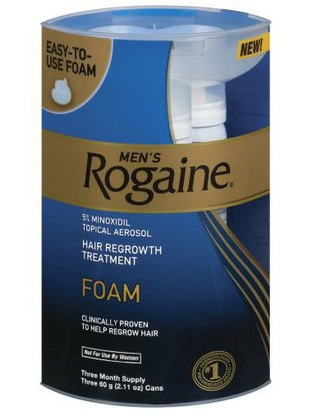 We receive a lot of questions at US Hair Restoration about the use of Minoxidil (Rogaine), and how it affects hair growth after a hair transplant procedure. There are mixed reviews people find on the internet through different websites and blogs about the Foam version of Rogaine. Some say it helps hair growth, others say it hinders, while some claim it does absolutely nothing. We receive a lot of questions at US Hair Restoration about the use of Minoxidil (Rogaine), and how it affects hair growth after a hair transplant procedure. There are mixed reviews people find on the internet through different websites and blogs about the Foam version of Rogaine. Some say it helps hair growth, others say it hinders, while some claim it does absolutely nothing.
Minoxidil (Rogaine) may be used after a hair transplantation on the newly transplanted area, for protecting the already existing hairs which are genetically predisposed to thinning. The hair grafts which are actually transplanted from the donor area require no medication for growth and maintain a permanent residence in the balding area. Those are the healthy hairs which are not affected by the hormone DHT (Dehydrotestosterone) which causes thinning and baldness.
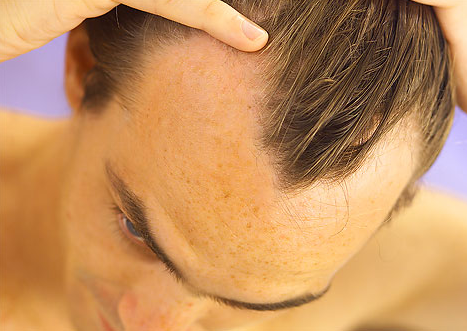 There may be some loss of existing native hair in the balding area due to shock loss, and for this we recommend Propecia for male patients to protect against. Propecia is proven to work better then Rogaine for the prevention of shock loss in men, and continues to have remarkable results in the patients who use the medication as directed. Unfortunately it does not work on women, but in these cases Rogaine does work and is a recommend option for the first few months after hair restoration surgery. There may be some loss of existing native hair in the balding area due to shock loss, and for this we recommend Propecia for male patients to protect against. Propecia is proven to work better then Rogaine for the prevention of shock loss in men, and continues to have remarkable results in the patients who use the medication as directed. Unfortunately it does not work on women, but in these cases Rogaine does work and is a recommend option for the first few months after hair restoration surgery.
Tags: female hair loss, finasteride, Male Hair Loss, minoxidil, propecia, rogaine, shock loss
Posted in after hair transplant, hair loss complications, hair loss medication, men hair restoration, women hair loss | No Comments »
|
|








 Last season saw the launch of a series of webinars meant to educate those interested in the science and art of hair restoration, as well as personally connect with
Last season saw the launch of a series of webinars meant to educate those interested in the science and art of hair restoration, as well as personally connect with 



